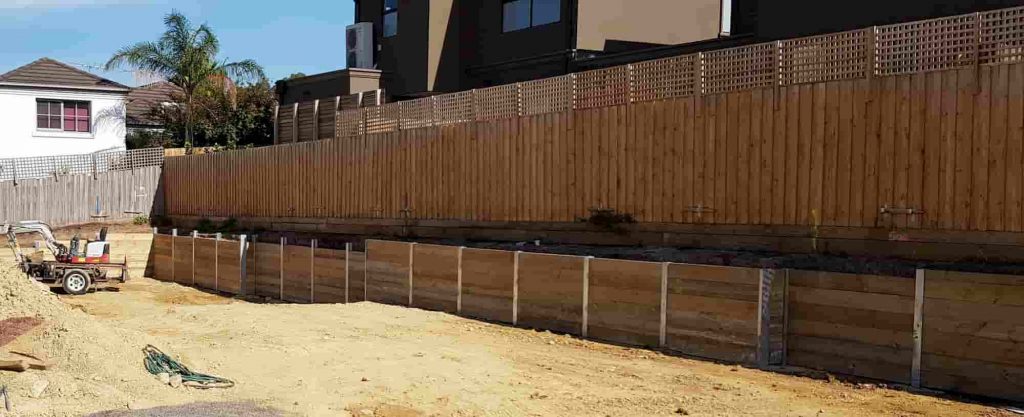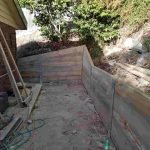Introduction
In the world of building and landscaping, keeping walls play an important function in managing soil disintegration, enhancing looks, and providing structural assistance. But what enters into constructing these important structures? That's where the expertise of knowledgeable maintaining wall builders enters play. Whether you're trying to find a retaining wall installer, a retaining wall contractor, or just curious about the materials utilized like concrete sleepers, H beams, wood sleepers, timber sleepers, or stone, understanding their engineering understanding is vital.
Understanding the Engineering Know-how of Experienced Retaining Wall Builders
https://tuffstuffretainingwalls.com.au/The process of constructing a keeping wall is more than simply stacking blocks or putting concrete. It includes a deep understanding of soil mechanics, hydrology, and structural engineering principles. Competent retaining wall builders possess not simply experience however also a selection of technical abilities that permit them to navigate the intricacies associated with this type of construction.

When you think about it, every project presents unique difficulties. The website conditions can differ extensively-- ranging from high slopes to loose soils-- and this variability demands tailored solutions. A competent retaining wall builder examines these aspects carefully to pick the ideal style and products. For example, when handling extensive clay soils that broaden and contract based upon moisture levels, specific strategies must be utilized to avoid failure.
What Makes Retaining Walls Essential?
Retaining walls are basic for a number of factors:
Soil Disintegration Control: They assist support slopes and prevent soil displacement. Creating Usable Land: By leveling land, they expand functional space for gardens or patios. Aesthetic Appeal: Beautifully designed walls can improve residential or commercial property value. Water Management: They can direct water stream far from structures.These aspects highlight why hiring a proficient professional is critical for ensuring longevity and functionality.
Types of Maintaining Walls
Gravity Walls
- These depend on their weight to keep back soil. Typically made from concrete or stone.
Cantilevered Walls
- Utilize a lever arm designed to resist lateral pressure. Often built utilizing reinforced concrete.
Anchored Walls
- Use cable televisions anchored in the earth behind the wall. Highly reliable for high-pressure situations.
Modular Block Walls
- Made from interlocking blocks held together by gravity. Easy to set up and maintain.
Sheet Stack Walls
- Consist of thin sections driven into the ground. Commonly utilized in soft soil conditions.
Materials Used in Retaining Wall Construction
Concrete Sleepers
Concrete sleepers are robust materials that use durability and versatility in style. They're especially reliable for contemporary visual preferences while requiring very little maintenance over time.
H Beams
H beams supply considerable strength for taller walls where there's significant lateral pressure from soil. Their industrial design typically provides itself well to contemporary landscapes.
Wood Sleepers & Timber Sleepers
Wood-based choices provide an environment-friendly option but need careful treatment against rot and bugs. Timber uses natural charm however might demand regular maintenance to make sure longevity.
Stone Keeping Walls
Stone walls evoke a sense of timelessness and can mix perfectly with natural landscapes. Nevertheless, they frequently demand higher labor costs due to their detailed installation processes.
The Role of Soil Mechanics in Building Retaining Walls
Understanding soil behavior is fundamental for any retaining wall builder. Soil types vary extensively-- sand drains rapidly while clay retains moisture-- and each type has different load-bearing capacities that affect how a wall will carry out over time.
Why Do Different Soils Matter?
Clay soils can swell when damp, increasing pressure versus walls. Sandy soils may move unexpectedly without correct drain systems in place. Rocky surfaces might need specific equipment for excavation or anchoring.An experienced contractor will perform thorough website examinations, including soil tests, before deciding on specs for products and designs.
Hydrology Concerns in Retaining Wall Design
Water management directly affects stability; pooling water behind a wall creates hydrostatic pressure that can cause devastating failures if not effectively handled through drain solutions like weep holes or French drains.

How Do Drainage Systems Work?
Weep holes permit excess water to escape. French drains redirect water stream far from walls. Proper grading keeps water away from susceptible areas.Ignoring these aspects could result in costly repairs down the line!
Cost Factors to consider When Working with a Retaining Wall Builder
Building a retaining wall isn't practically selecting materials; it's likewise about budgeting successfully for both instant costs and long-term maintenance expenditures related to different types of walls.
|Type|Typical Expense (per foot)|Longevity|Upkeep Level|| --------------------|-------------------------|------------|-------------------|| Concrete Sleepers|$20 - $30|50+ years|Low|| H Beams|$25 - $35|40+ years|Medium|| Wood Sleepers|$15 - $25|15 - thirty years|High|| Stone|$30 - $50|100+ years|Low|
Investing carefully ensures sturdiness without breaking the bank!
FAQ Section
What credentials need to I try to find in a maintaining wall contractor?
Look for accreditations associated with construction management, as well as experience particular to maintaining walls-- a portfolio showcasing previous tasks helps too!
How do I determine which material is best for my project?
Consider factors such as location (soil type), wanted aesthetics, spending plan constraints, and whether you prefer low-maintenance alternatives over visual appeal.
What's associated with obtaining authorizations for building retaining walls?
Local policies vary; usually, you'll need plans sent by your specialist revealing compliance with zoning laws before approval is provided by city coordinators or other authorities.
Can I build my own keeping wall?
While DIY tasks are possible, they need significant knowledge about local soils & & hydrology as well as engineering principles; errors can cause costly repairs later on!

How long does it require to build a retaining wall?
Depending on complexity & & size-- expect anywhere from one weekend (for little modular jobs) approximately a number of weeks (for larger custom-made develops).
Are there any ecological considerations when developing a maintaining wall?
Absolutely! Constantly ensure your project abides by regional guidelines regarding wildlife environments & & run-off control steps throughout building and construction activities!
Conclusion
In summary, comprehending the engineering knowledge of knowledgeable retaining wall contractors is necessary whether you're preparing your next home enhancement project or merely desire more insight into landscaping techniques that protect your residential or commercial property investment! From recognizing various kinds of materials-- like concrete sleepers or stone-- to understanding hydrological effects and expense considerations-- it all come down to making notified choices backed by professional knowledge! So do not be reluctant; speak with professionals who bring years of experience in addition to innovative services tailored particularly towards attaining lasting results!